Skopelos Churches and Monasteries: Your 2024 Local Guide
Charming Skopelos churches and monasteries can be found in abundance all over the little Sporades island of Skopelos. Stumbling across them while hiking, exploring, or en route to the beach is a highlight of exploring this part of Greece.
If you have spent any amount of time in Greece, it will not come as a surprise to hear that there are more than 360 churches in Skopelos. This is a deeply religious Orthodox country after all and a large % of the Greek population has strong religious views.
Still, it is an impressive number considering the fact that Skopelos has an area of just 96.3 km². There are 100 Skopelos churches in the main town alone!
Skopelos Churches
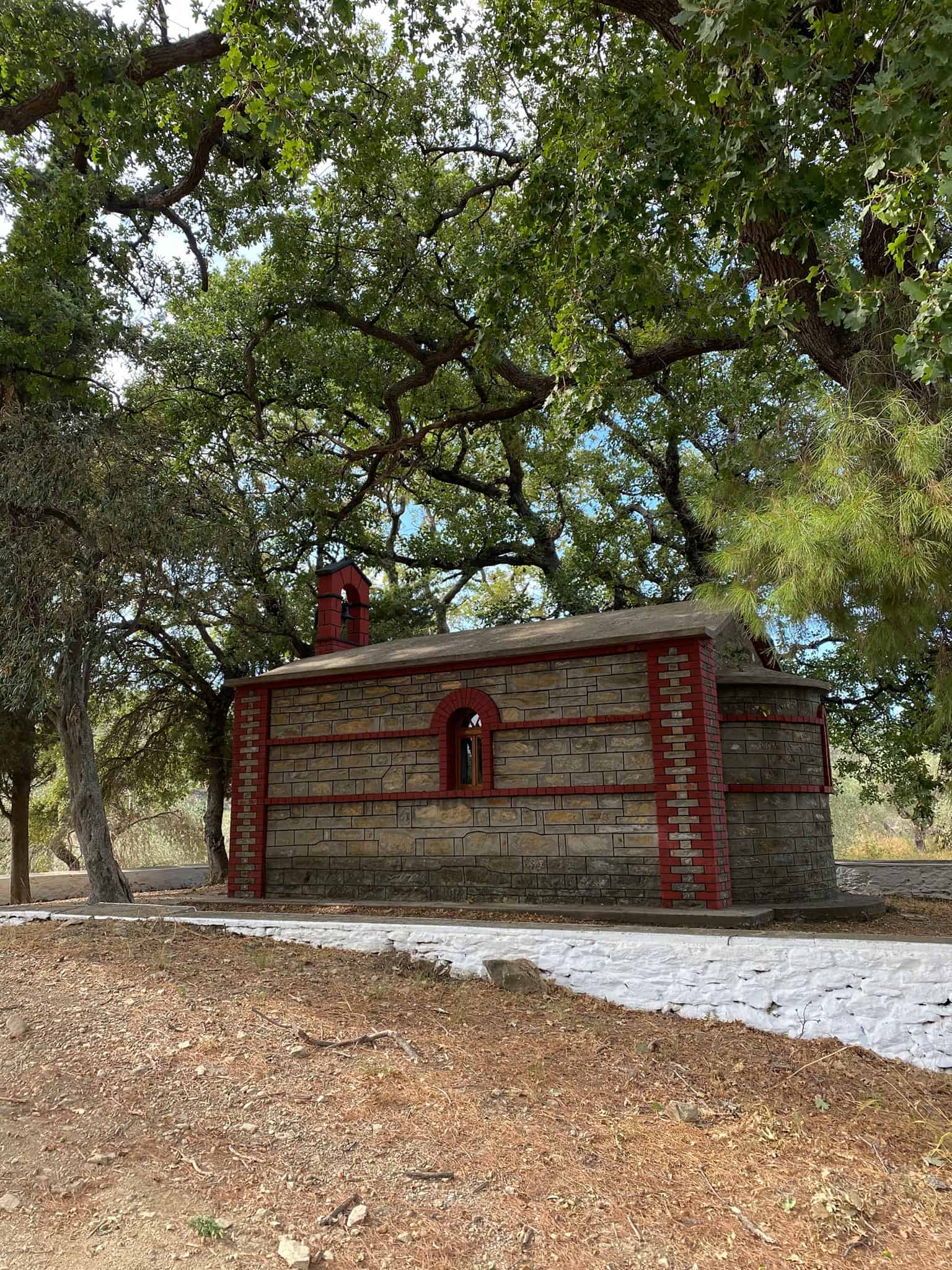
The overall number of churches in Skopelos (360) is an estimate. Different sources that you will speak to will throw up different numbers.
Why? Due to debate on factors like where the “limits” of town lie, what can be counted as a church, etc. Island politics, you know!
There are some Skopelos churches that are more famous than others. Agios Ioannis Kastri, for instance, is arguably one of the most famous churches in all of Greece.
The clifftop chapel has rapidly become one of the most iconic postcard images of the country after it was featured in the movie Mamma Mia. The Panagitsa of Pyrgos in the Chora is also well-known as it is one of the first things you see as your ferry pulls into Skopelos port for the first time.
If you are interested in Greek culture, history, and religion, or you simply like to photograph some cute woodland churches, this post will help you find some of the best Skopelos island churches and monasteries.
Agios Ioannis Kastri
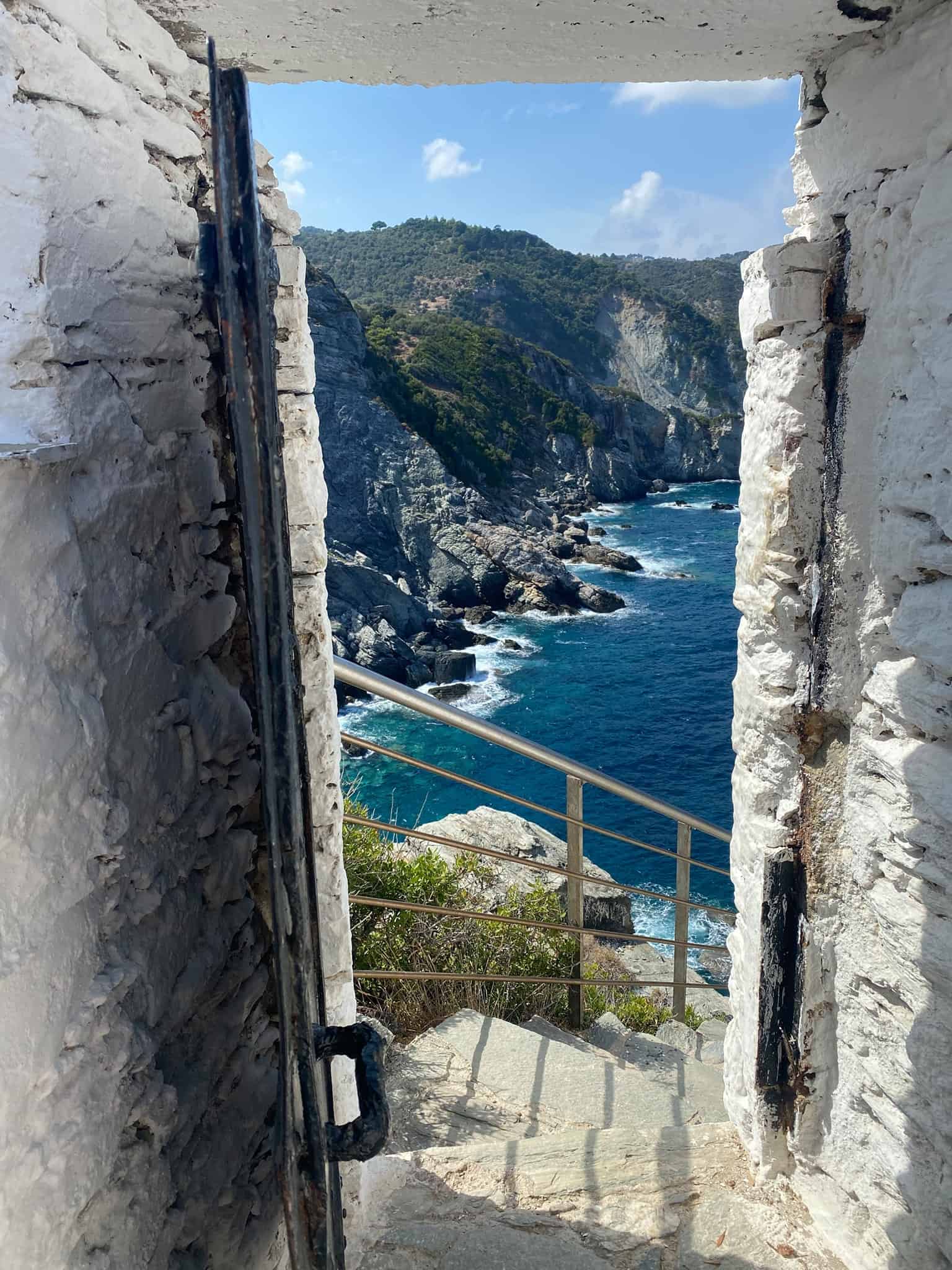
Agios Ioannis Kastri, (the “Mamma Mia” church) is one of the most famous Skopelos churches. It is perched on top of a rock in the northeastern part of the island.
The church featured in the scene for Sophie’s wedding in the Hollywood movie “Mamma Mia!” Ever since it has started to attract thousands of tourists every year that have the desire to sprint up its 250 narrow stone steps and unleash their inner Meryl Streep.
The translation of the name “Agios Ioannis Kastri” actually means “St. John on the castle”. It is believed that a defensive castle once stood here centuries ago.
That is a likely theory considering the fact that Skopelos, and other islands in the Sporades archipelago, were under the constant threat of pirate attacks at one point. (You can also visit the fascinating and eerie pirate graveyard of Sendoukia if that aspect of local history interests you.)
Agios Ioannis Kastri is 6.5km away from Glossa. There currently isn’t any public transport that runs here.
So, the best way to visit, if you are not renting a car is to take a cab from Glossa for around €25. (You can ask the driver to wait for you while you explore).
Alternatively, you can participate in a Mamma Mia tour. You can go inside the church.
Its interiors are pretty small – essentially the size of someone’s living room. There are some interesting religious frescoes and icons on display as well as a guest book that you can sign.
Church of Agios Athanasios
The whitewashed church of Agios Athanasios is one of the oldest churches in Skopelos. It dates back to the 11th century and can be seen from all areas of the port, as well as on the approach to the island by sea.
It is an aisle-vaulted basilica that is often used as a place to host weddings, baptisms, and other celebrations. If you take a walk up the steps to the church from the port area, you will be rewarded with a breathtaking place to watch the sunset over the Aegean.
You can see Alonissos island shimmering in the distance and on a clear day, you will be able to see all the way out to Mount Athos and Halkidiki from up here.
“Secret” Skopelos Churches
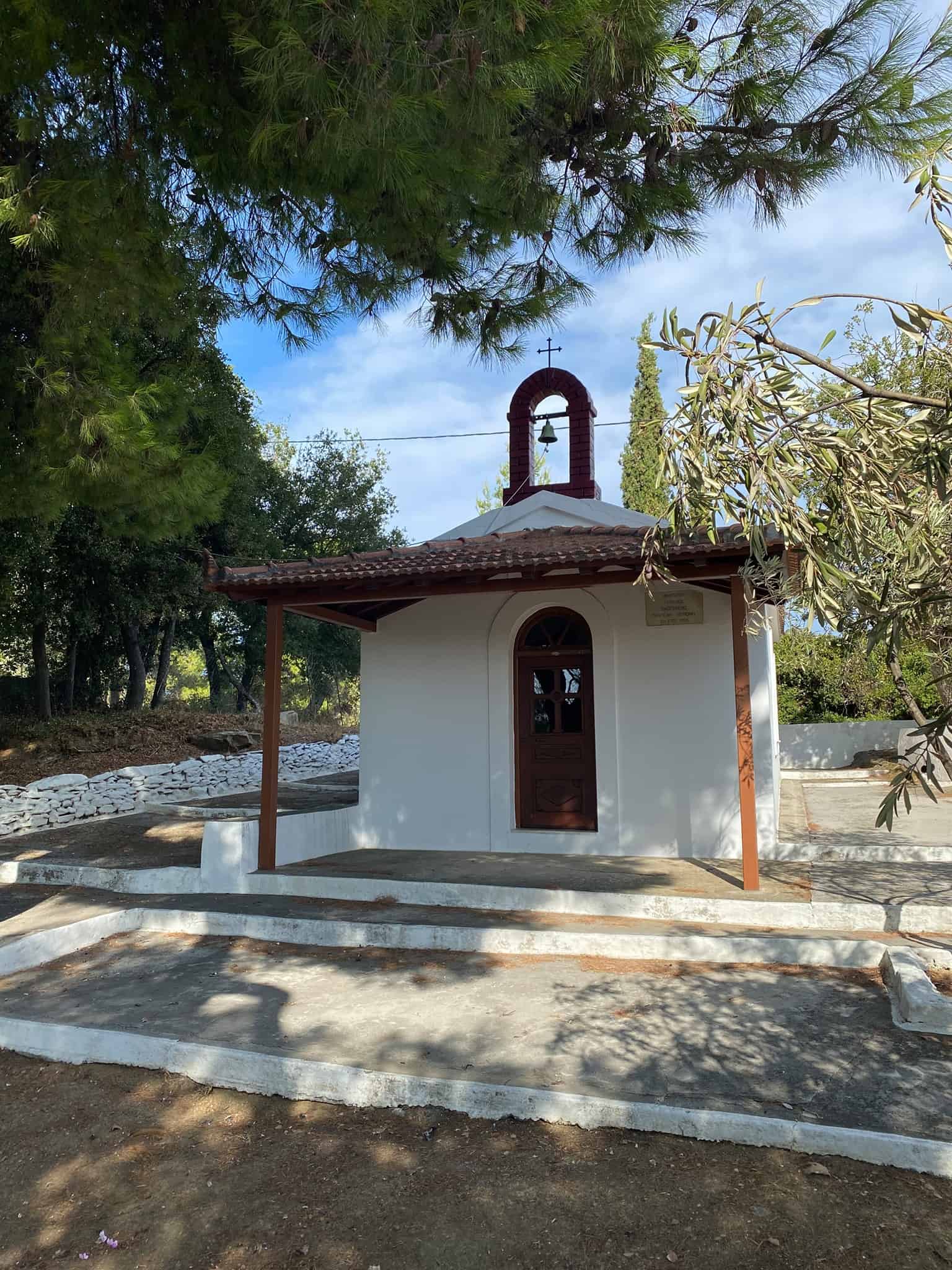
Some of the most charming Skopelos churches are often found hidden away in the woodlands. Many Skopelos churches also have very limited information surrounding them.
For instance, they are not marked on any map. Or perhaps they are marked with mysterious names such as “historic wayside shrine 1”, and “historic wayside shrine 2”.
Finding information about which saints they are consecrated to, their history, and their construction, requires a little digging for information, enquiring with locals, or deciphering the faded Greek letters above their doorways. Some sit down unsuspecting dirt trails, tucked away from view.
Peering through their dusty windows enables you to see inside and catch a glimpse of colourful religious icons, alters, and frescoes. However, they are often locked and inaccessible, closed off until a local villager comes by with the key to pray or tidy up the interiors.
This all somehow adds to the mystery. Occasionally you will come back from hiking in Skopelos and pass a church that was locked earlier to see a candle burning inside and nobody around. There are also some small private churches that are set inside people’s own gardens.
Church of Panagitsa of Pyrgos
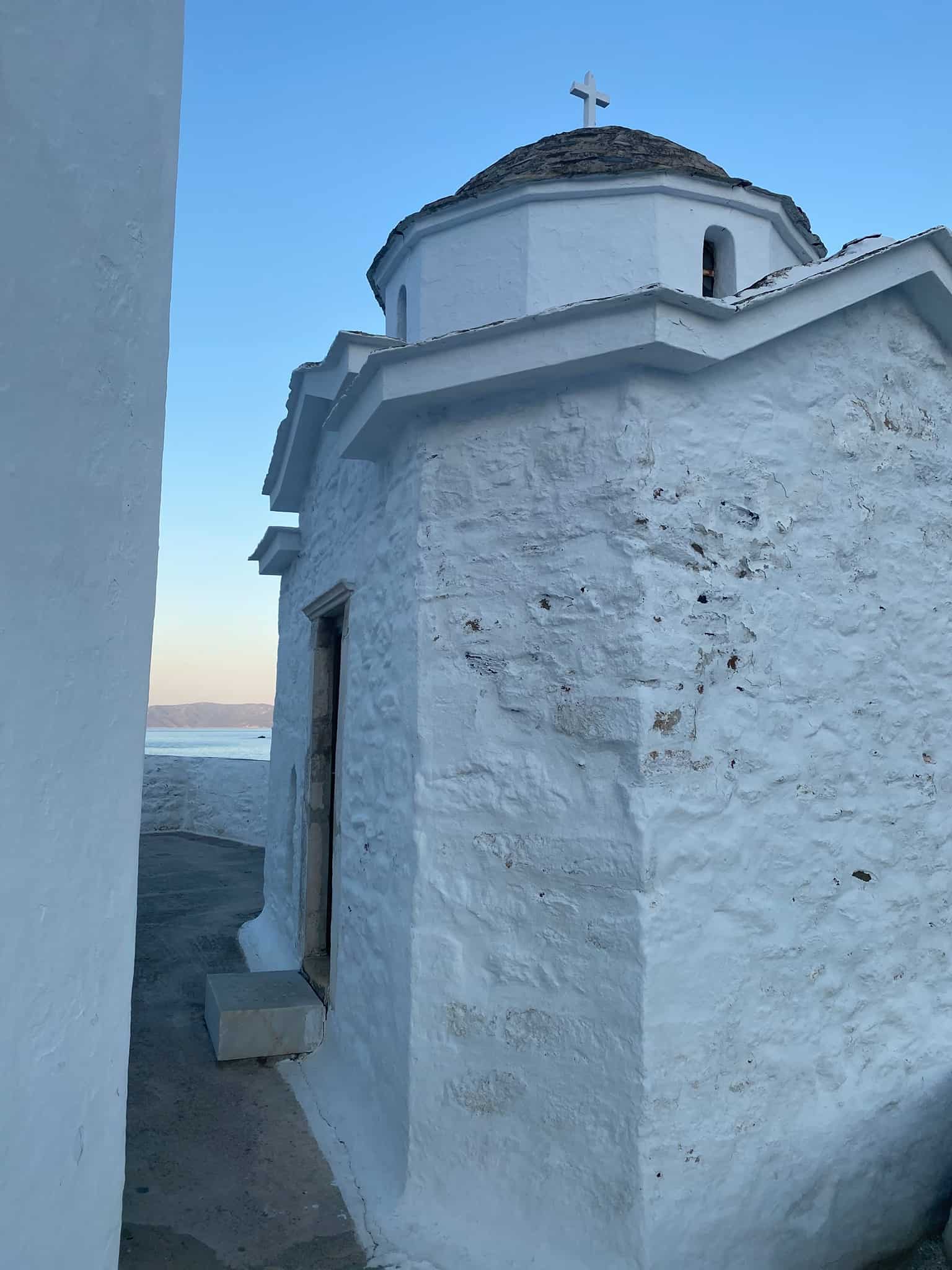
The 17th-century Panagitsa of Pyrgos is the first church you see when your ship pulls into the island. Small, winding narrow steps lead up to it and a visit to the church can easily be paired with a visit to the nearby Venetian castle (“kastro”).
Vibrant frescoes inside the Panagitsa of Pyrgos display scenes from both the Old and New Testaments. The door is often locked.
The church opens at specific (seemingly ever-changing) times during the summer. This is a popular venue for Skopeliti weddings and ceremonies.
The Church of the Nativity of Christ
The 1765 Skopelos Church of the Nativity of Christ is just a short walk away from the Panagitsa of Pyrgos. Various important relics are stored here and available for viewing, including relics of St. Riginos (the island’s patron saint).
Alexis Orlov, a Russian soldier, donated the church bell in 1770. It was donated as a thank-you for the islander’s assistance in defeating a Turkish fleet during the battle of Cesme that same year.
The Church of Panagia Eleftherotria
Taking a left turn at Platanos Square leads you to a narrow cobbled street with a few local stores and a beautiful stone church. This is the church of Panagia Eleftherotria.
There is some debate as to the initial construction date of the church. The inscriptions above the door state it as 1871. However, smaller marbles around the building reference the 16th century.
The church has been built in a Byzantine style, quite unlike the vast majority of other Skopelos churches. You will not find another church that looks like this one across the whole island.
The Holy Temple of Agioi Apostoloi
The 11th-century Holy Temple of Agioi Apostoloi can be found next to the Town Hall, in the heart of Old Town Skopelos. It is believed that an ancient temple devoted to the Goddess Athena once stood on these grounds.
Agioi Apostoloi was built by Bishop Anastasios who is credited with constructing other churches and shrines on the island. It was expanded and renovated in the centuries following the 11th century. Many of its frescoes and murals date back to the 16th century.
The Church of Agios Michail Synadon
The church of Agios Michail Synadon sits just beneath the Kastro in the Chora. One of the most unique and interesting things about this church is the five Roman sarcophagi that have been built into the walls.
There is little information as to who these graves belong to and why. Similarly, you can also find the remnants of a Greek burial site here, with faded inscriptions that point back to the 2nd century.
The church itself dates back to the 17th century. However many of the graves and inscriptions dating back to the 1st and 2nd centuries.
Skopelos Monasteries
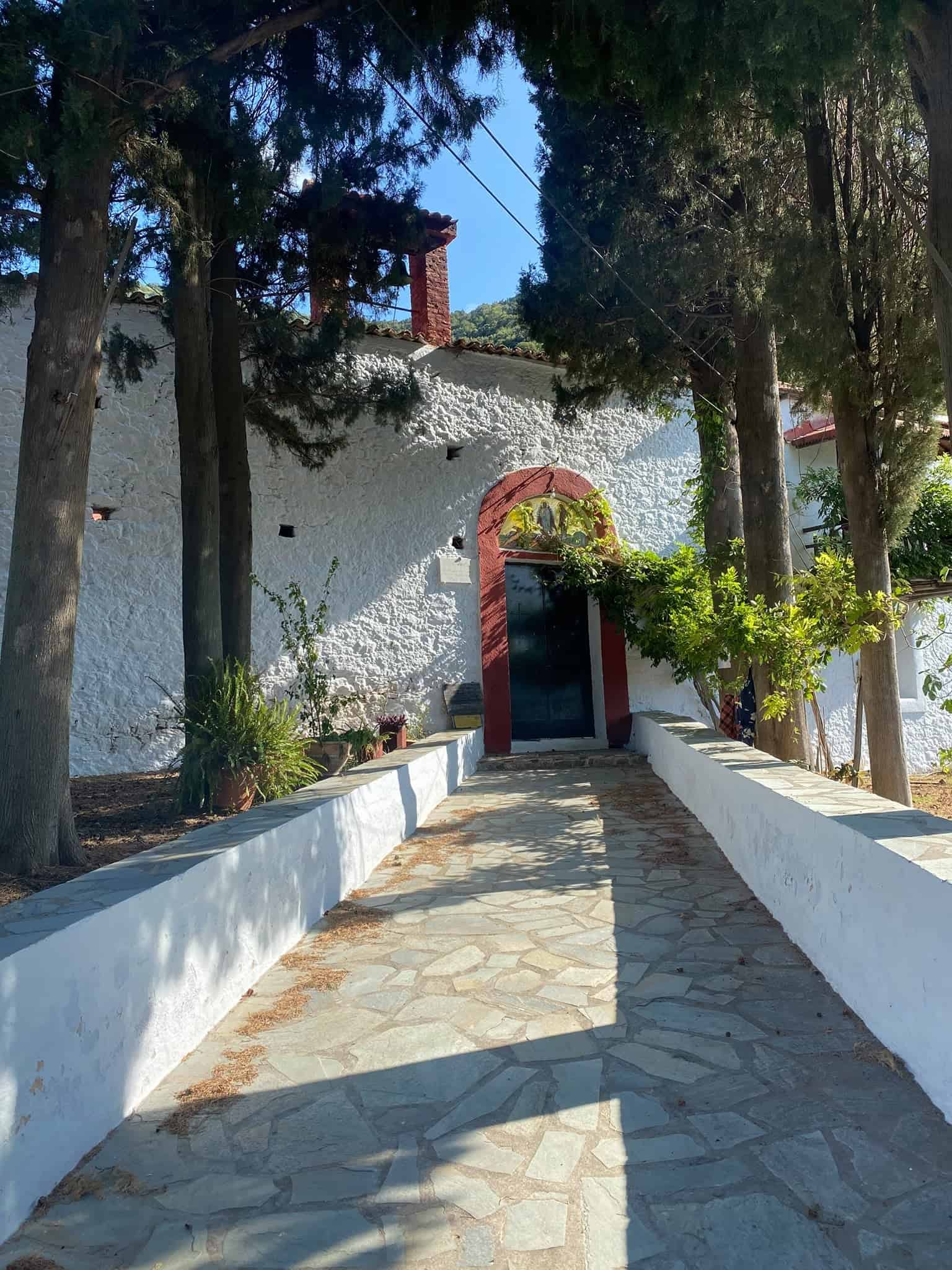
There are 40 Skopelos monasteries scattered around the island, 14 of which are just a short distance from Skopelos town. Three Skopelos monasteries that are still in operation today date all the way back to the Byzantine era.
If you have a spare afternoon/day to spare during your time on the island, you can opt to walk along the eastern side of the port towards Mount Pelouki. Several of the most interesting Skopelos monasteries can be found here.
Some are currently still inhabited by monks and nuns. You can fit a visit to 3-4 monasteries into one day of your schedule.
The T1 hiking trail connects o the monasteries of Sotiros (the saviour), Prodromou (the baptist), St. Barbara, and Evangelistria.
You will also find the stunning Skopelos churches of St Anna and the Holy Trinity and the Archangels along this route. Most monasteries and churches in Palouki tend to open at around 8 am, close for siesta around 2.30 pm, and then open again from 5.30 pm until around 8.30 pm.
It is prudent to check the specific timings before you set out as this is often subject to change. You can ask your hotel/Airbnb host for information or ask them to call the monastery for you.
Monastery of Evangelistria
The Monastery of Evangelistria (also known as the “Annunciation of the Virgin”) is one of several Skopelos monasteries on the foothills of Mount Palouki. It can be reached in a 5-7 minute drive from the Chora or a 41 minute woodland hike.
The monastery dates back to the 18th century and the sunbleached remnants of its old defensive walls are still in tact and surround the building. The monastery is free to enter but it is worth calling ahead to check the latest opening times.
Iera Moni Sotiros Monastery
The 16th-century Iera Moni Sotiros monastery is one of the closest Skopelos monasteries to the Chora. It sits just north of the hamlet of Mili.
The monastery celebrates the “Transfiguration of Christ” on the 6th of August. So, if your Skopelos trip happens to coincide with this day, you can opt to watch the services held here, and participate in the processions and feast.
The facade of the monastery is colourful and charming – painted in shades of gleaming white and deep red. The little courtyard that encircles the monastery is filled with trees, potted plants, and signs of monastic life – such as little washing lines that hang between the buildings.
When you stop by Iera Moni Sotiros today, there is usually nobody around. Centuries ago, Skopelos residents took refuge here when the island was tormented by pirates and violent attacks were a constant threat.
Timiou Prodromou Monastery
Monastery Timiou Prodromou is the northernmost monastery on Skopelos island on the slopes of Mount Palouki. It overlooks the beach of Paralia Kerasorema, whose incredible rock formations make it one of the most beautiful beaches on Skopelos island. (and which can only be reached by renting a private boat).
If you only have time to visit one of the Skopelos monasteries, make it this one. From all corners of the monastery complex – its cobbled courtyard, its porticoed walkways, etc, you can enjoy sweeping vistas over the Aegean.
The panoramas from up here are unparalleled and offer endless blue in every direction. Timiou Prodromou started out as a male monastery.
However, from the 1920s up to today, it operates as a convent and is home to several female nuns. From the outside, the whitewashed monastic structures don’t look too different from the other churches and monasteries in Skopelos.
However, it is the interiors that are spectacular. Timiou Prodromou Monastery is filled with vibrant murals depicting scenes from the bible, precious rare wooden religious icons, and gold detailing on the walls.
There is also a small shop on site where you can buy Greek souvenirs and agro products that are produced by the nuns. For instance, fresh Skopelos honey, beeswax, olive oil, and cocoa butter.
The Monastery of Agios Riginos
The Monastery of Agios Riginos sits 4km south of the town. It is dedicated to the patron saint of Skopelos and in fact, there is an interesting story of magic and legends that surrounds him.
Legend has it that the area of Skopelos that sits between Stafylos and Cape Amarandos is known as Drakontoschima.
The story states that in ancient times, Skopelos was inhabited by a dragon that terrorised and killed all of the people living on the island. That is, until the Skopeliti hero, Agios Riginos chased him towards the sea where he veered off a cliff.
This gorgeous, red-roof monastery was built in 1728. It was then restored and repaired in 1960.
The Monastery of the Archangels (Taxiarches)
The 1672 Monastery of the Archangels (Taxiarches) lies 2.5km away from the village of Glossa in northwestern Skopelos. It is widely regarded as being one of the finest pieces of post-Byzantine era architecture in the entirety of the Sporades islands.
FAQs about Skopelos Churches and Monasteries
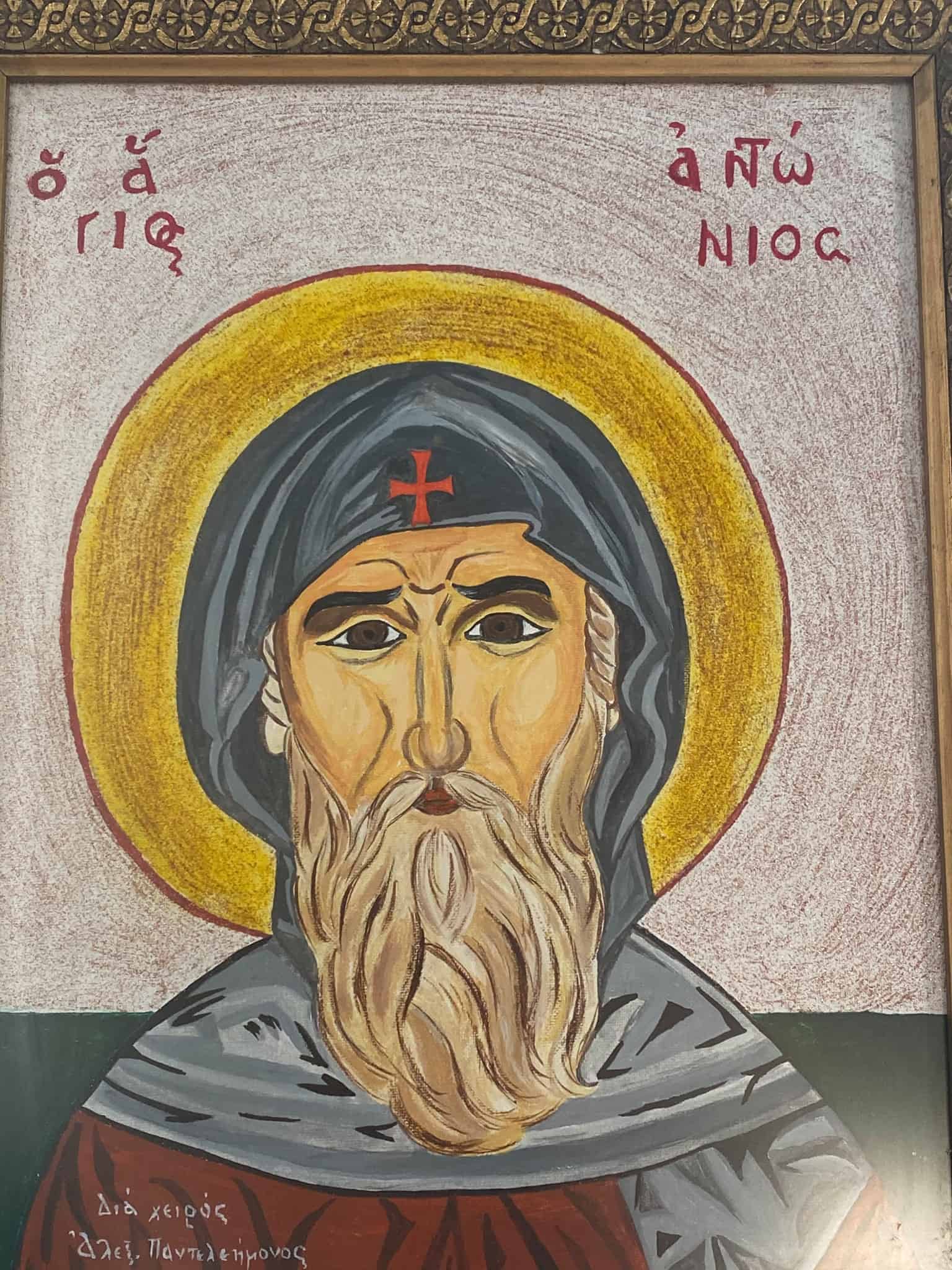
Do you have any further questions about the churches and monasteries on Skopelos island or about planning a trip to Greece in general? The answers to some frequently asked questions on the topic are detailed below.
How many churches are there in Skopelos?
There are over 360 churches on the Greek island of Skopelos. Approximately 100 of these are found within the limits of the main town (Chora).
What is the famous church in Skopelos?
The famous church in Skopelos is Agios Ioannis Kastri (St John’s on the castle). This is the hilltop church featured in Mamma Mia.
Final thoughts on Skopelos churches and monasteries
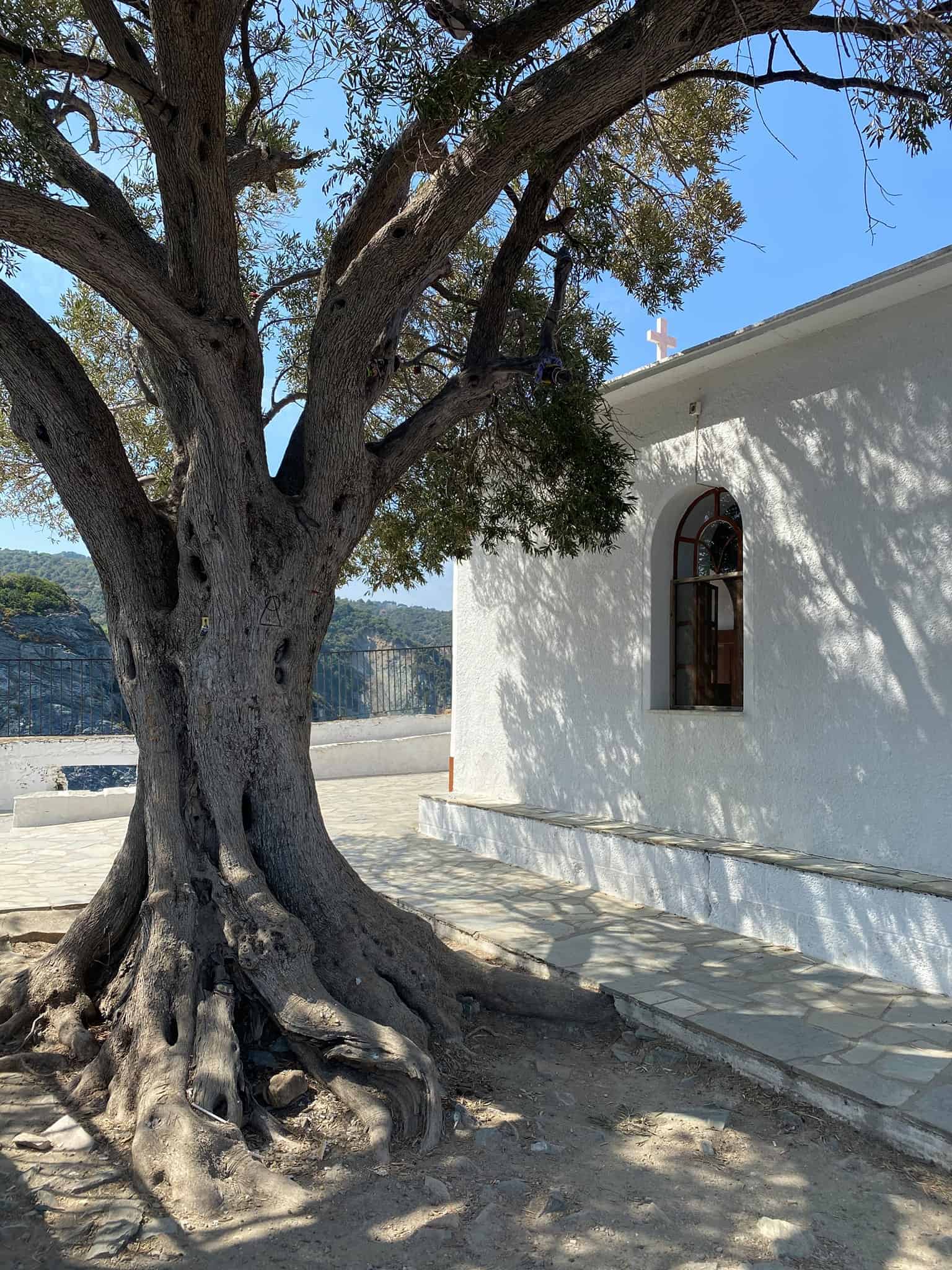
Do you have any further questions about Skopelos churches or greek island hopping? Feel free to drop a comment in the box below.
I made the move to Greece in 2017 and have lived here ever since. I spent eight months in Skopelos from 2020/21.
If you are visiting Skopelos for the first time, you may also enjoy this post on where to stay in Skopelos, this post on Skopelos restaurants, or this post on Skopelos’ most charming villages.
Safe travels! Melissa xo
